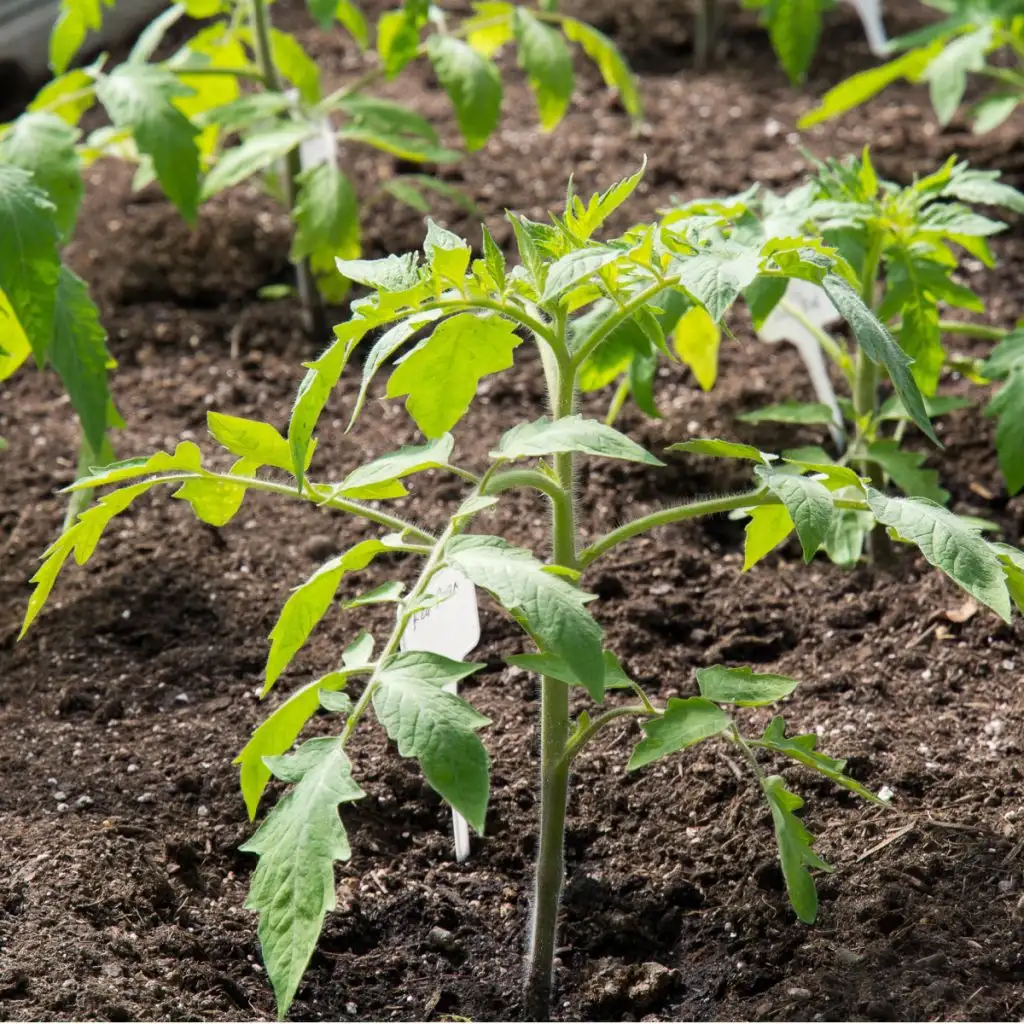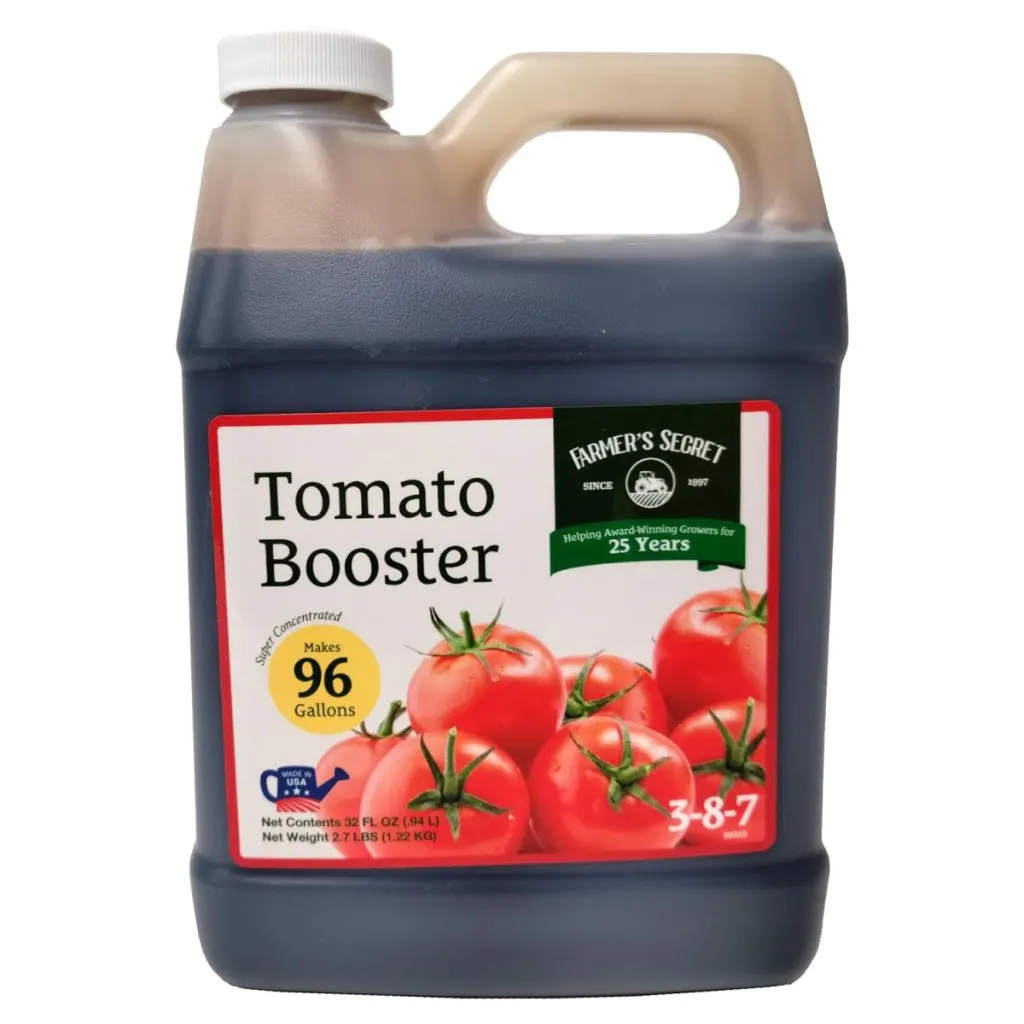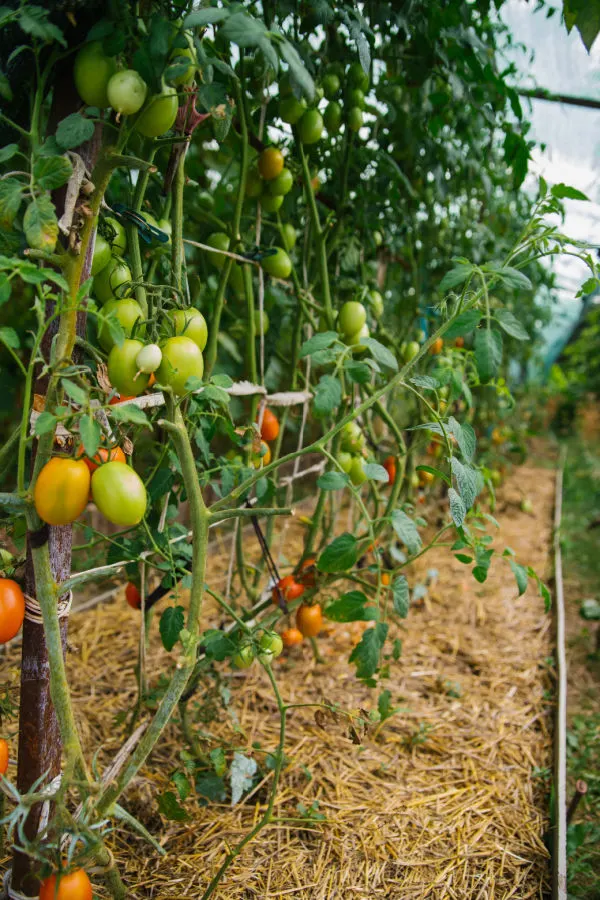Want to know the three biggest mistakes many gardeners make when growing backyard tomatoes? Or more importantly – how to avoid them so you can grow healthy plants that give you a big harvest?
Whether you grow your tomatoes in a traditional garden, a raised bed, or in pots or containers – there are a few key needs plants require to maintain their health. At the top of that list are water, nutrients and sunlight. Without all three, plants simply can’t survive – let alone produce a good crop of tomatoes.
Quite importantly, how a plant is cared for as it grows impacts how these three important needs are met. And, in a very big way! Which is exactly why avoiding the three miscues below is important to grow strong plants – and a big crop of tomatoes.

The Top 3 Mistakes Gardeners Make Growing Tomatoes!
#1 Not Giving Plants The Right Fertilizer
To reach their full potential, tomato plants need nutrients. And even if they are planted in the best soil possible, they usually need more than the soil can provide to really produce a sizable harvest.
The best way to give your tomato plants the extra nutrients they need is with fertilizer. But, and this is often where gardeners make a critical mistake, the type of fertilizer you feed your plants – and how you fertilize your plants can make a big difference between success and failure.
When it comes to the type of fertilizer to use – select a fertilizer that is higher in phosphorus and potassium than nitrogen. Yes, nitrogen will green up your plants and help them grow. But too much of it makes the plant only grow stems and foliage – and not concentrate on fruiting.
Phosphorus, on the other hand, is what plants use to produce blooms and eventually fruit. Potassium is important as well for plant health and ripening. When powering tomato production, these two are more important than nitrogen.
Look for fertilizers with an N-P-K ratio (Nitrogen, Phosphorus & Potassium) that provides at least double the phosphorus and potassium to nitrogen. This will still give enough nitrogen for plant power – but keep the plant concentrating more on fruiting. Affiliate Link: Farmer’s Secret Tomato Booster Fertilizer (32oz) – Super Concentrated – 3:8:7 Ratio

Fertilizing With A Low & Slow Approach
When it comes to fertilizing tomatoes, more is not always better. It is better to give your plants a steady but lower diet of energy than just a few big doses of fertilizer throughout the growing season.
Too much power all at once can send the plant into a growing frenzy. But instead of helping to produce more tomatoes, the plant uses all of the extra energy to grow more stems and leaves – all at the expense of producing more blooms and fruit!
The best ways to fertilize your plants is by taking a steady and slow approach. Fertilize every seven to ten days with a lighter dose. Use half of the recommended rate as this will help to not overpower the plant. But by fertilizing more regularly, it supplies constant, steady energy to stay healthy and produce fruit.
#2 Leaving The Soil Bare Around Your Tomatoes
One of the biggest mistakes of all when it comes to growing tomatoes is not giving plants a protective layer of mulch. Even if you are growing your tomatoes in containers and pots – a light layer of mulch can make a huge difference in your plant’s performance!

Leaving the soil bare under your growing plants can lead to a whole host of issues for tomato plants. First and foremost, a thick layer of mulch helps to minimize weeds and the chore of weeding. Weeds are not only unsightly, they also steal valuable nutrients from the soil. Nutrients that your tomato plants need to grow and produce.
But mulch does so much more than just prevent weeds. It also helps keep moisture in the soil. Bare soil can quickly dry out from the hot sun. But a layer of mulch helps to keep that moisture in at the root level of tomato plants, right where they need it most.
Even more, mulch helps to regulate the soil temperature. It keeps the soil from overheating on extremely hot days, and yet, it helps hold the heat in through cool nights. By doing this, it keeps the roots of your tomato plant steady. Which is exactly what they need for optimum growth!
One More Reason To Mulch Tomato Plants
Perhaps most importantly of all, a layer of mulch can help keep your tomato plants safe from blight. Blight is caused from spores that live in the soil. If left bare, those spores can easily splash up onto the leaves of plants when it rains or you water. And when it does, it can infect your plants in the process. See: How To Stop Tomato Blight – 3 Simple Secrets To Keep Your Plants Safe!
How much mulch is enough? In a traditional garden or raised bed setting, plants should have at least four inches of mulch to be effective. 6 inches is even better. For containers, one to two inches is best to help hold in moisture and keep the plants from drying out too fast.
Listen Below To Our Podcast On The Best Way To Support Your Tomatoes
As for best choices – straw, shredded leaves and grass clippings all work great for mulching tomato plants. To really make your mulch powerful, put a few inches of compost around your plants. Every time you water or it rains – the compost nutrients will leach to the roots below!
#3 Stepping Near Your Plants
Another one of the most common mistakes gardeners make when growing tomatoes or any vegetable for that matter, is stepping on or too close around the root zone of their plants. And for tomato plants, that can really have a negative impact on their health, growth and their ability to produce a sizable harvest!
The roots of a tomato plant are its lifeline. They not only anchor the plant to the ground, they are also responsible for absorbing air, water and nutrients from the soil that the plant needs to grow and produce.
The roots of a healthy tomato plant can easily extend 12 inches out from each plant. And when those roots become smashed from heavy foot traffic, the soil around them compresses down on them. Once that happens, it becomes difficult for the roots to breathe or absorb food and water – and the plant suffers.
When watering, weeding, fertilizing or harvesting, always take care to stay far away from the root zone. Leaving the soil loose and undisturbed allows the roots to grow freely. And loose soil gives your plant the best chance of success.
Here is to avoiding 3 of the biggest mistakes gardeners often make when growing tomatoes – and to a big harvest of juicy fruit this summer! Once harvest time rolls around, be sure to check out these tips: How To Know When To Harvest A Tomato – The Answer Might Surprise You!
This Is My Garden
Follow Our Facebook Page For Great Gardening Tips And Advice! This Is My Garden Facebook Page
This Is My Garden is a garden website created by gardeners, for gardeners. Jim and Mary Competti have been writing gardening, DIY and recipe articles and books and speaking for over 15 years from their 46 acre Ohio farm. They publish three articles every week, 52 weeks a year. Sign up today to follow via email, or follow along!
